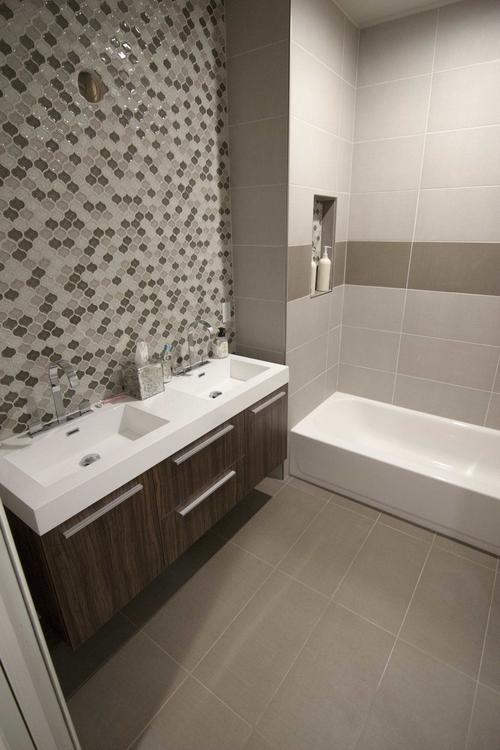How to clean bathroom floor grout? The grout in your bathroom floor can easily accumulate dirt, grime, and stains over time, making it appear dull and dirty. Cleaning bathroom floor grout is essential to maintain a clean and hygienic environment. In this article, we will provide a step-by-step guide on how to clean bathroom floor grout effectively, including preparing the area, choosing the right cleaning solution, scrubbing the grout lines, rinsing and drying, and applying a sealer. By following these steps, you can restore the cleanliness and shine to your bathroom floor grout.

Prepare the Area
Before you begin cleaning the bathroom floor grout, it is important to remove any loose dirt or debris from the surface. Sweep or vacuum the floor to ensure that the grout lines are clear of any loose particles. This will prevent the dirt from getting trapped in the grout during the cleaning process. Additionally, make sure to wear protective gloves and eyewear to safeguard yourself during the cleaning process.
Choose the Right Cleaning Solution
The next step is to select an appropriate cleaning solution for your bathroom floor grout. There are several options available, including commercial grout cleaners, bleach, hydrogen peroxide, baking soda paste, or a mixture of water and vinegar. Research the specific needs of your grout and the type of tiles you have to determine the best cleaning solution. Be mindful to avoid using bleach on colored grout, as it may cause discoloration.
Scrub the Grout Lines
Apply the chosen cleaning solution onto the grout lines, ensuring that they are thoroughly saturated. Use a grout brush or a toothbrush with firm bristles to scrub the grout lines in a back-and-forth motion. Pay extra attention to any heavily stained areas, ensuring that the cleaning solution penetrates deeply. Work on small sections at a time to prevent the cleaning solution from drying before it can be thoroughly scrubbed.
Rinse and Dry
After scrubbing the grout lines, thoroughly rinse the bathroom wall with clean water. This will remove any residual cleaning solution and dirt. For larger tiles, consider using a mop or sponge to ensure even coverage and rinsing. Once rinsed, use a clean towel or mop to dry the bathroom floor. This step is crucial to prevent water spots or any residual moisture from remaining and potentially causing damage or discoloration.

Apply a Sealer
To protect the newly cleaned grout lines and prevent future stains, consider applying a sealer. A grout sealer acts as a protective barrier, repelling dirt, moisture, and stains. Follow the instructions on the sealer carefully, as application methods and drying times may vary. Use a brush or a sponge to apply the sealer to the grout lines, ensuring that it is evenly distributed. Allow the sealer to dry completely before allowing foot traffic on the floor.
The function of bathroom floor
The bathroom floor serves as a crucial element in any bathroom design. It not only provides a foundation for the overall aesthetic appeal but also fulfills several important functions. From durability and water resistance to safety and comfort, the bathroom floor plays a significant role in creating a functional and visually appealing space.
Stability and Support:
One of the primary functions of bathroom flooring is to provide stability and support. The floor forms the foundation of the bathroom, carrying the weight of fixtures such as the bathtub, sink, toilet, and cabinets. It must be structurally sound and able to withstand the weight and pressure placed upon it. The flooring material should be resilient and able to support heavy loads to ensure the integrity of the tiling a bathroom.
Moisture and Humidity Resistance:
The bathroom is a high-moisture environment, subjected to frequent exposure to water and humidity. The flooring in the bathroom must be able to withstand these conditions without deteriorating or becoming damaged. Waterproof or water-resistant flooring materials, such as ceramic tiles, porcelain, vinyl, or natural stone, are commonly used in bathrooms. These materials effectively prevent water penetration, reducing the risks of mold growth, structural damage, and deterioration.

Safety:
Safety is of utmost importance in the bathroom, as it is a space where slipping and falling accidents can occur. The flooring in the bathroom must be slip-resistant to minimize the risks of accidents, especially when wet. Textured finishes, matte tiles, or anti-slip treatments can be applied to the surface of the floor to increase traction and reduce the likelihood of slipping. Choosing a flooring material with a high slip resistance rating is essential to maintain safety and prevent accidents.
Aesthetics:
Bathroom flooring significantly contributes to the overall aesthetics of the space. It sets the tone for the design and can enhance the visual appeal of the bathroom. The right flooring choice can create a cohesive and pleasing aesthetic, complementing the color scheme, fixtures, and overall style of the bathroom. Whether you prefer a sleek and modern look, a traditional and elegant feel, or a warm and rustic ambiance, the flooring material can help achieve the desired aesthetic.

Comfort:
Comfort is an important consideration in any room, and the accent wall bathroom is no exception. The flooring should provide a comfortable surface to walk on, particularly in areas where you spend a lot of time, such as near the vanity or bathtub. Using materials like cork, rubber, or engineered wood can provide a softer and more comfortable feeling underfoot. These materials offer some shock absorption, reducing fatigue and discomfort when standing or walking for extended periods.
Easy Maintenance:
Bathroom flooring should be easy to clean and maintain to ensure the cleanliness and hygiene of the space. The ideal flooring material would be resistant to stains, discoloration, and the buildup of mold or mildew. Smooth surfaces like porcelain or ceramic tiles, vinyl, or laminate are popular choices for bathroom floors due to their non-porous nature, which makes them easier to clean and maintain.
Conclusion:
In conclusion, cleaning bathroom floor grout is a necessary step to maintain cleanliness and hygiene in your bathroom. By following this step-by-step guide, you can effectively clean the grout lines, removing dirt, grime, and stains. Remember to prepare the area, choose the appropriate cleaning solution, thoroughly scrub the grout lines, rinse and dry the floor, and consider applying a sealer for added protection. Regularly cleaning and maintaining your bathroom floor grout will keep it looking fresh and prolong its lifespan. With the proper cleaning techniques and care, you can restore the cleanliness and shine to your bathroom floor grout, ensuring a clean and inviting space in your home.

